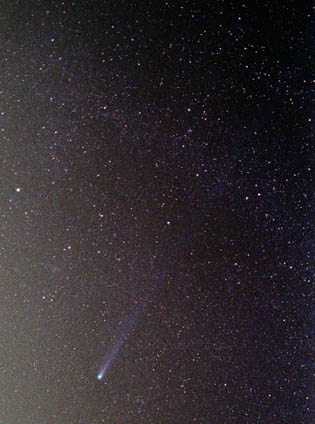
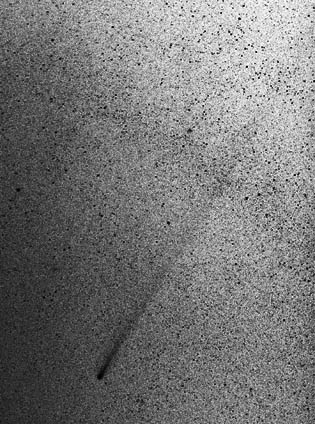
  |
| Date & Time: | Apr 13 2002, from 27:09 to 27:18 JST(+0900) |
| 3 images composed with 3min. exposed | |
| Optical: | MC Rokkor f=100mm F2.5, Aperture: F4.0 |
| Autu-guided with Kenko SKYMEMO Equatorial | |
| Camera: | MINOLTA XD |
| Film: | Fujicolor SUPERIA 1600 |
| Location: | Koumi town, Nagano pref. |
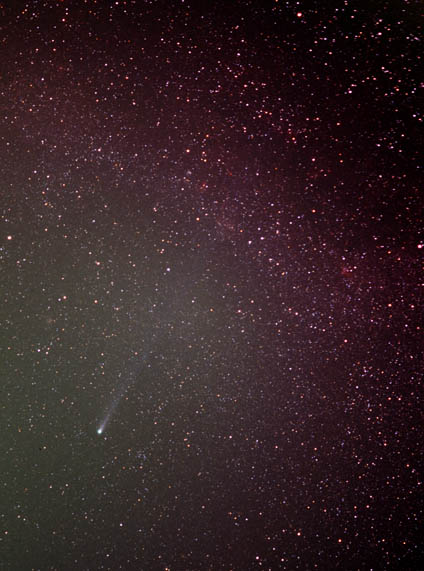 |
| Date & Time: | Apr 13 2002, 27:18 to 27:25, 27:27 to 27:34 JST(+0900) |
| 2 images composed | |
| Optical: | SMC PENTAX f=165mm F2.8, Aperture: F2.8 |
| Autu-guided with TAKAHASHI EM-200 Equatorial | |
| Camera: | PENTAX 67 |
| Film: | Ektachrome E200 (+1EV pushed) |
| Location: | Koumi town, Nagano pref. |
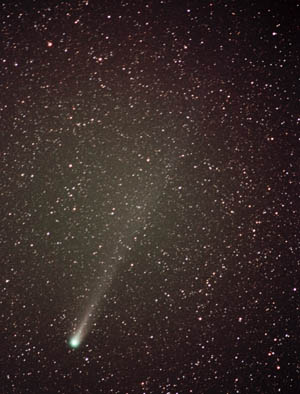 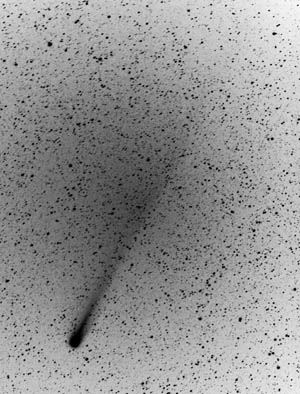 |
| Date & Time: | Apr 13 2002, from 27:44 to 27:56 JST(+0900) |
| 3 images composed with 5min. exposed | |
| Optical: | TAMRON SP f=300mm F2.8, Aperture: F2.8 |
| Autu-guided with TAKAHASHI EM-200 Equatorial | |
| Camera: | VIXEN VX-1 |
| Film: | Ektachrome E200 (+1EV pushed) |
| Location: | Koumi town, Nagano pref. |
 Ikeya-Zhang on Apr 29, 2002 |
 Ikeya-Zhang on Mar 30, 2002 |
 |
 |
Copyright(c) 2002 by Naoyuki Kurita, All rights reserved. |
| To top page | To Comets&Meteors index |